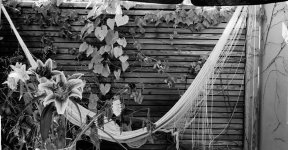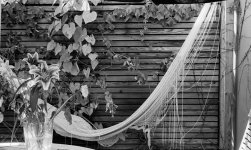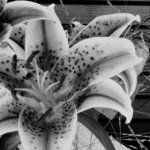colinh
Well-known
Just had a couple of frames to use up and saw this scene of death and decay (on my terrace) so I thought I'd see how these lenses compare.
Normally people compare lenses of the same focal length. So what?
I used a tripod, but my M7 has no self timer (booh hiss) and I couldn't be bothered to find a cable release. Both shots are at f/8. I moved the tripod back to get approximately the same field of view.
Both images have the same film resolution. The film is Acros 100 in Rodinal 1+50 (nominal 10:00 @ 20 C).
Ah, when creating the jpegs, I wasn't fair: ZM is at 98% quality, Summicron at 92%. 🙂
If anyone wants an enlargement of any particular area, let me know.
I'll try this again one day with the magical lens testing film, SPUR Orthopan UR / ADOX CMS 20. And with a cable release. 🙂
First: ZM35/2
Second: Summicron 50/2 (current)
colin


Normally people compare lenses of the same focal length. So what?
I used a tripod, but my M7 has no self timer (booh hiss) and I couldn't be bothered to find a cable release. Both shots are at f/8. I moved the tripod back to get approximately the same field of view.
Both images have the same film resolution. The film is Acros 100 in Rodinal 1+50 (nominal 10:00 @ 20 C).
Ah, when creating the jpegs, I wasn't fair: ZM is at 98% quality, Summicron at 92%. 🙂
If anyone wants an enlargement of any particular area, let me know.
I'll try this again one day with the magical lens testing film, SPUR Orthopan UR / ADOX CMS 20. And with a cable release. 🙂
First: ZM35/2
Second: Summicron 50/2 (current)
colin





